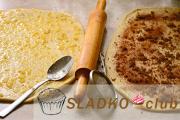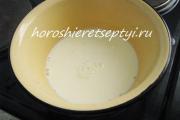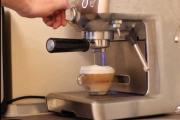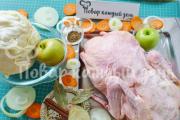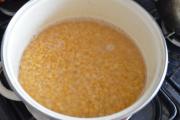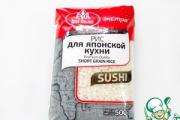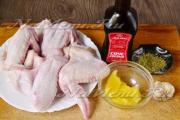How to choose high quality natural cheese. Choosing quality cheese from the counterfeit counter. How to choose cheese for different dishes
As you know, there are no bad and good cheeses- they are only of high quality and low quality. Rennet, fermented milk and melted, from goat, sheep or cow milk, hard and semi-hard, pickled and soft - the richness of choice is amazing.
They say that not so long ago in the United States came into force a law defining the requirements for ... holes in cheese! Switzerland, which is rightly read by an expert in this matter, is seriously outraged by this turn of events: if the States determined that the size of the holes in the Emmentaler should not exceed 2 cm, then the Swiss believe that they simply must be the size of a large cherry. The former explain their decision by the fact that ... it is inconvenient for cheese slicing machines to cut a product with large holes, the latter urge to understand the technological intricacies of cheese production. Each side has its own truth.
How not to get lost in such an abundance and learn how to choose high-quality, tasty and healthy cheese?

Which cheese is the best? 10 tips for those looking to learn how to choose the right cheese:
1. Pay attention to the icons located on the cheese packaging. In international practice, the designations PDO, PGI, AOC, DOC, DOP are accepted - abbreviations mean that this product was produced in a strictly defined territory and meets all the necessary standards. For the Russian Federation, the inscription "Complies with the technical regulations for milk and dairy products No. 88-F3" is relevant.
2. An important point- best before date. For pickled cheeses, it is minimal (in Italy there is a type of mozzarella that can only be eaten for one day), for hard, aged cheeses, it tends to infinity (and don't mind: Parmesan can be stored at home for up to six months - and this for cheeses is almost infinite !). Therefore, we carefully read the small letters on the packaging and take the cheese, the expiration date of which does not expire yesterday.
3. Do not buy cheeses in small shops and semi-basement shops: one of the requirements for their storage is a specially allocated place, they should not lie with sausages and side by side with fish. A separate refrigerator is essential if you want an Edam sandwich for breakfast, rather than a slice of bread with something remotely resembling smoked bacon.
4. Look carefully at the edges of the cheese head - they should not be dry, cracked, wrinkled or crumbly.
5. The color of the cheese should be uniform in most cases. In some species it is slightly more yellow, in others it is almost white, but at the same time it is certainly uniformly colored. (This, of course, is not about varieties that, by definition, should be spotted - dor blue, marble, roquefort and others.
6. Do not hesitate to sniff cheese - it should smell subtle ... cheese (there is an exception to the rule, but we will not talk about them now, rarely anyone has constant access to a regular supply of expensive French blue cheese). If you smell ammonia, do not take the product, do not spoil your appetite and mood.
7. Before buying cheeses you can and should try! In many specialized cheese shops, customers are offered free tastings of the goods, but if we are talking about chain supermarkets, do not hesitate to ask for a small piece to try - this is accepted, this is correct.
8. With a few exceptions, the bulk of cheeses can boast evenly spaced "eyes" that should be relatively uniform in shape and size.
9. If you are in doubt about the quality of hard cheese, try rolling it into a ball from a small piece. Happened? Then don't buy it - because this is the most common cheese product that has little to do with quality cheeses.
10. And - the main thing: quality cheese can never be cheap. If natural milk product, and not its substitute, made with the addition of special dry mixtures and vegetable fats, it should be understood that due to the rather large purchase cost of raw materials (and in the case of imported cheeses - and the cost of delivery and payment of customs duties), the finished product must be expensive.
March 9th, 2016
I really love cheese. But good and high quality. Such that under a bottle of red dry. So that it melts in your mouth, and that its taste is such that you want to close your eyes. Mmmm ... Unfortunately, we have a lot of sadness in the shops right now. How many people do not write about import substitution, but I don’t see good cheeses there. Although, for the sake of fairness, I can say that when we visited Kostroma a few years ago, we tasted delicious locally produced farm cheeses at the Cheese Exchange. But, as the farmers themselves explained to us, they do not have the opportunity to produce them in large quantities, and they do not reach Moscow.
And then suddenly Anton - once and brought home a piece of awesome Eycher. At the same time, the husband smiled mysteriously and said: "You are saved! I found where to buy them!"
In general, yes, my friends. The place was found. It is called as tasty as the cheeses themselves - "Cheese sommelier"... The shop has an awesome website where it says that they even regularly hold cheese tastings, both paid and free. In general, you yourself understand, we, as fans of delicious cheeses, could not resist and went to meet the owners and taste.
2.
The cheese shop was small but cozy. It is located next to an Austrian wine shop.
Alexander Krupetskov - the founder of the "Cheese Sommelier" project and the owner of the shop immediately admitted to us that he had chosen this place for a reason. Of course, such a juxtaposition of cheeses and wines is very successful. After all, many of us have long been aware that good wine best served with fine cheese.
3.
It all started a few years ago, even before the imposition of sanctions. It would seem that there were times: go to any supermarket, buy any European cheese from the best cheese makers and enjoy! But it turns out that this was not quite the case. Once, having returned from France, Alexander just decided to go to one of the good supermarkets and look there for the cheese he liked in France. He said, as he is called, to the saleswoman, but she only threw up her hands:
- There's no such thing!
The same answer followed when he named several more varieties of cheese.
Probably, it was after that story that Alexander got the idea to open a store of rare cheeses in Moscow. Why just a store though? Simultaneously with it, the School of Cheese also appeared, where, in practice, customers began to learn how to choose the right cheeses and combine them with wine and fruits, thereby developing a cheese culture in our country. You must agree: it's one thing when we buy a product without knowing much about it, and quite another when we know how to serve it to the table, with what to serve it, and how to eat it in order to get maximum pleasure.
4.
After all, take any town in France, Italy, Spain, England, Holland or Switzerland. There, cozy cheese shops coexist with bakeries and are almost as common. A delicious cheese is on the table in any home.
In general, a year and a half ago, just on the eve of the imposition of sanctions, the first cheese shop appeared in Moscow (I will secretly say that Alexander now has two of them and a third is planned to open). Well, and then, of course, I had to rebuild a little. The legislation in "Cheese Sommelier" is respected, and therefore, instead of French, Italian and Spanish suppliers, they had to look for others - from those countries from which the import of cheeses into Russia is allowed.
5.
Of course, the easiest way was to put up with this difficult time and start eating tasteless pieces with the inscription "cheese", which are now abundant in grocery stores. But that was not our way!
And now the "Cheese Sommelier" sells legendary cheeses from Switzerland, which, fortunately, did not come under the sanctions, the best representatives of Tunisia and Morocco - the former French colonies, so they know how to make cheese there, and our best farm cheeses, which are all still, you can take it to Moscow
And if we talk about the ratio, then 50% are Swiss cheeses, 40% - ours and 10% - all the rest.
6.
7.
Look at the prices. Will you say expensive? Yes, it is possible! But quality cheese, like any other type of product, cannot be cheap. Especially if it is made from real milk, without any palm additives. And I, I must admit, I'd rather not eat "cheeses" for a whole month, but then I'll buy myself a piece of this - real one and eat it with pleasure. :)
8.
9.
10.
11.
Now in Alexander's shop there are about 50 varieties of all kinds of cheeses. Buyers are very different people. There are also connoisseurs who come here for certain types of cheese that they have preferred for a long time. There are also people who, by the way, are gradually becoming more and more, who want to try something unusual. There are those who, like us, are tired of the sanctions and want a tasty and high-quality product.
Anton with the head of the "Red Witch" Swiss cheese. I will tell you about it a little later.
I was ready to swallow it whole. :))
12.
And there are some customers who take cheeses as a gift. You must admit that there are often situations when the brain is bursting in attempts to come up with something to give this for a holiday to a loved one whom you have known for a very long time and, it seems, has already given him everything, or to a boss who has everything. And what about a cheese basket with unusual, tasty, expensive and high-quality cheeses?
Of course, Swiss cheeses are the most popular among buyers: gruyere, sbrinz and roclette, as well as our farm camembert, which is made in the Moscow region.
By the way, a few more nuances. In the shop, you will not find slices of hard and semi-hard cheeses. This is because cheese dries faster in slices and loses its quality. Therefore, they cut it here only into pieces and only when a buyer comes for it.
13.
Each cheese goes through three tastings before entering the shop, not counting the very first one - on the farm where it is produced. Alexander, together with his employees, personally comes there and finds out in what conditions cows and goats live, what they eat, if there are any artificial additives in their feed, and tries the cheese. If everything is in order with this, and by taste the cheese is good, then the suppliers bring it three more times for testing. So that it was possible to understand how cheeses from different batches taste different.
“Unfortunately, it also happens that the cheese in the first batch is very tasty,” Alexander told us. - And in the second it suddenly tastes bitter. Well, we think it might be an accident, we ask you to bring the cheese for the third time. And he is again no. This suggests that the first time the suppliers tried and produced a really high-quality product, and then they were lazy. So you have to refuse and no longer work with them.
Well, now I'll tell you about the cheeses we tried.
The first was, of course, Swiss cheese "Tete de Moine", or "Monk's head".
My friends, we first tasted this miracle in Switzerland two years ago. I told you about it then. And since then I have not eaten anything (or almost nothing) tastier. Therefore, as soon as I saw him in the window, you yourself understand ... I could not resist. The cheese is wonderful! It belongs to semi-hard Swiss cheeses with a special way of serving. Slicing is done using special knife... A head of cheese is pushed onto a rod, and this very knife cuts off very thin rosette shavings from it in a circle. Such sockets are also called "chanterelles".
14.
And the production of Tete de Moines began as early as the 12th century by monks from the Belle Monastery from fresh cow's milk. Everyone liked the cheese so much that soon they began to make it on other monastic farms. The monks gave part of the cheese as a church tithe, for which it was nicknamed "Monk's Head". The taste is incomparable. It's hard for me to describe it to you. It is clear that there are no additives in this cheese, even close. But when you put such a "chanterelle" in your mouth, it seems that you find yourself in the forest for mushroom meadow... This is amazing!
15.
Second cheese english smoked cheddar... Honestly, we got the last piece of this cheese. In general, it is under sanctions, but this very piece remained from the batch that was imported into our country even before their introduction. In general, what can I say, my friends? If any of you suddenly gathers in England, firstly, be sure to try it yourself, and, secondly, bring a little bit to us too. In my rating, he took first place!
16.
Cheddar is considered a semi-hard cheese and one of the most popular English cheeses. It is made from pasteurized cow's milk. And it was named so after the town of Cheddar in West England, where this cheese was first made in the 15th century. Then the cheddar was aged in caves, which were ideal for its maturation.
It tastes amazing - slightly spicy, salty, with smoky notes and hints of flowers and nuts. I named it antidepressant cheese, because as soon as I ate a bite, my mood immediately lifted. This is how he is.
17.
And this cheese is called Red witch... It is Swiss and also belongs to semi-hard cheeses. There is a story about him. In February, the "Red Carnival" takes place in Switzerland. At its core, this is something similar to Halloween - those who live in Switzerland may be more accurate. But the bottom line is that this cheese was invented precisely for this holiday. It is high-calorie, nourishing, hot mulled wine is eaten with it - in general, the most suitable cheese for winter.
It seemed to us a bit like "Tete de Moine".
18.
Caprino. Our hard cheese, which is made in the Stavropol Territory.
In general, this cheese seemed to us both in structure and taste similar to Italian Parmigiano Reggiano. It broke into pieces in the same way, was a little spicy and very rich. Probably, like parmaggiano, it is good for them to sprinkle ready-made hot dishes, bake something with it in the oven. But still, there are differences from Parmigiano. First, caprino is made from goat milk and it smells like this milk. And, secondly, they stand not for a year, but for five months.
19.
And this cheese is a real revelation for me. Halloumi for frying with mint... The cheese is also ours, near Moscow, but this is the kind of cheese that is very popular in Cyprus.
20.
Honestly, I've tried before fried cheeses, I like them. But to cause complete delight, there is no such thing. Therefore, when Alexander suggested that we take halloumi, I doubted. Why, especially if there are so many other awesome cheeses in the shop.
But we still took him. And the houses were fried.
21.
22.
They ate hot with lingonberry sauce. Amazingly delicious! Just something extraordinary. We will definitely buy this cheese again.
23.
Now let's move on to soft cheeses. We tried three types of them. For example, Eicher Blue is a soft Swiss farm blue cheese made from cow's milk. In general, Alexander immediately told us the story of blue cheeses. At the first time, when they appeared, the most appreciated were cheeses, where there was little mold. But gradually, people's tastes changed. And now most of those who prefer such cheeses most often choose varieties with a lot of mold.
Eicher Blue is just one of the first. It is creamy and very tender. It lacks the richness that other blue cheeses provide. In it, rather, only her notes.
24.
And the other two soft cheeses were already ours.
The first was called Soft cheese with white mold according to Kuznetsov's recipe No. 1... To be honest, he immediately caught my attention as soon as I saw him in the shop window of the Cheese Sommelier. It attracted attention with its uniqueness. Firstly, they make it not even in the suburbs, but in Moscow. Secondly, pay attention to its packaging. Quite simple. But ... there is something in it!
25.
The number written in pen that you see on the package is an assessment on the quality scale of these particular cheeses, set by the author himself. Next to his signature.
Recipe No. 1 is also indicated on the package: pasteurized cow's milk, table salt, mesophilic starter culture, milk-clotting enzyme preparation of animal origin, culture of white noble mold Penicillium camemberti. That is, in essence, this is a real Camembert prepared according to French technology, although the author does not call it.
26.
It may not taste like the same French Camembert that can be tasted in his homeland, but we would rate the cheese as of a very high level. Perhaps I would have bought one more.
27.
By the way, due to the fact that it is prepared only from natural ingredients, it has a very short shelf life - only 10 days.
28.
However, there was also Camembert, which is called that. Camembert goat.
29.
30.
When I first tasted it, I immediately wanted to call it brutal cheese. Yes, a sort of masculine one. This Camembert has a very bright scent and will appeal to those who just like it. At the same time, it is unusually fresh, you can even feel milk in it.
31.
Well, and finally Cheese candies... Unexpected, right? :)
32.
In fact, they are very tasty. And if we had not been told that they contain cheese, we ourselves would not have guessed. Although I can’t say that the cheese is not felt in them. There are cheesy notes and are expressed quite clearly.
We tried three types of sweets: with cocoa, mint and ginger. I liked the mint most of all, and Anton was imbued with ginger.
33.
Well, and I want to finish my story with tips. The fact is that we asked Alexander Krupetskov: How can ordinary customers, and not experts, when buying cheese in a store (after all, there is not always a "Cheese Sommelier" :)) can you distinguish a high-quality product from a low-quality or stale one? Here's what he advised:
Firstly, in any case, do not buy ready-made slices. Unfortunately, in large grocery stores, slicing is often made from trimmings and old stale cheeses. Therefore, if you decide to buy cheese, then it is better to buy a piece right away and ask to be sliced in front of you. Better yet, cut your own home.
Secondly, it is better not to buy cheeses with different additives - pepper, paprika, herbs, etc. It happens that with additives, manufacturers hide some disadvantages and unfortunate moments of the cheeses themselves.
Thirdly be sure to see what the cheese you take looks like. If you see that hard or semi-hard cheese is at least slightly melted, if it crumbles, then this, most likely, will indicate violations during its manufacture, for example, accelerated ripening technologies could be used in the process. Or this cheese was not stored correctly. Or it contains ingredients, additives that should not be there.
That's it.
Well, in the end I will also share with you a few links from "Cheese Sommelier":
- the page of the School of Cheese, where you can sign up for cheese tastings and indulge in all the delicious disgrace, as we did.
More than half of the cheese from Belarus is unsafe due to the high content of preservatives, the Rosselkhoznadzor said. In January, the department organized a special laboratory control at checkpoints, part of the supplies were detained at the border. The final results of the checks were disappointing.
"As a result, out of 19 suspended commodity consignments of cheese with a total weight of over 360 tons, in 10 consignments weighing over 190 tons, a significant excess of the mass fraction of sodium nitrate preservative E251 was established",- said in the message of the Rosselkhoznadzor.
The substance in question is sodium nitrate, it is used to extend the shelf life of products, as well as a dye and color stabilizer. The preservative is considered especially harmful for hypertension, bowel or liver diseases. When heated above 120 degrees Celsius, forms carcinogens and heavy metals.
Like many other colors and preservatives, sodium nitrate has almost no specific smell or taste. Therefore, it is almost impossible to independently calculate it in foods, including cheese.
But there are several signs that will help you recognize the correct cheese without unnecessary additives, including preservatives.
Connie Ma, 2013Tags and labels: check but don't trust
On the “sanctioned” cheese, the main guarantee of quality was the marks of origin authenticity - PDO or PGI (English-speaking countries of origin), AOC (France), DOC or DOP (Italy and Spain). In Russia, GOST R 52738-2007 applies to milk and its processed products, which describes in detail everything that can be found in real cheese - milk, by-products of its processing, starter cultures, rennet or other substances for coagulation, and strictly of animal origin.
It is enough for a cheese product to simply contain a certain amount of milk, the rest is largely left to the discretion of the manufacturer.
What exactly is mixed inside, and to which category the product belongs - cheese or a product similar to it - suppliers are required to indicate on the label. But, as consumers note, this is not always done. After slicing and repackaging in supermarkets, the head of the cheese product is easily "converted" into cheese.
 Composition of cheeses and cheese products, Livejournal Media, 2016
Composition of cheeses and cheese products, Livejournal Media, 2016 Simple math: count by milk
You can also recognize high-quality cheese using elementary calculations, writes:
“How to quickly understand what they are selling you under the guise of cheese?
To do this, it is enough to divide the price of cheese by 10-15 and compare this figure with the price per liter of ordinary milk lying next to it on the counter.
According to the technology, 1 kg of cheese requires 6 to 14 liters of milk (depending on the type). Consequently, the correct cheese cannot cost 200-300 rubles in any way, as you can often see it now. That is, the correct cheese should include the cost of one milk for 200-300 rubles per kilogram of cheese, not counting the cost of other costs.
The price of the right cheese should start at 400 rubles per kg. Anything below the price is fake. "
Color: not too yellow and no spots
Hard and semi-hard rennet cheeses usually have a pronounced yellowish tint. But too bright chicken color is a sign of presence food colors... Mostly natural substances such as beta-carotene and saffron are used. This practically does not affect the taste, but the most natural cheese has a rather pale appearance. The main thing is that the color is uniform - stripes and spots suggest that the product was not allowed to ripen.
Pattern: the more big-eyed, the better
Solid and semi hard cheeses, with the exception of parmesan and cheddar, must have holes, and the more evenly they are distributed over the piece, the better. Domestic standards admit that the "eyes" (as the drawing is called by experts) may be irregular or slit-like.
The smoother the holes and the larger their diameter, the tastier the cheese is. Cheese makers call a product without holes "blind" and in most cases is considered the result of a violation of technology.
Smell: nothing foreign
It's good if you managed to remember what flavor your favorite cheese had before the imposition of the sanctions. In this case, it is much easier to navigate after opening the package. Any extraneous odors are not a good sign. The cheese should not give off sharply either with lactic acid, or yeast, or, moreover, with rot or chemicals.
Consistency: does not crumble, but stretches
Experts call the cheese mass "dough" and specify that this mass should be plastic and tender. If the cheese crumbles, it is most likely that it was stored incorrectly or diluted with unnecessary components - vegetable oils, acidifiers, thickeners or preservatives. Smearing marks on the knife when cutting is a sign of milk powder. Oily droplets on the pieces of cheese, in turn, often indicate different herbal ingredients.
The easiest way to test the quality of cheese is in the microwave. When heated, the natural product melts perfectly and becomes even tastier. If you have something refractory and smelly in front of you, it is most likely a cheese product.
Consumer test: nothing is perfect
I decided to try all the cheeses found on the counter at once. Recently, a user found himself unfamiliar with any of the brands offered in the store. Therefore, I began to empirically find out which of the import substitutes is better:
“I chose nine different cheeses from different brands for testing. Everything is in standard packages with sliced cheese, about the same price, around 100 rubles per package. "
 , 2015
, 2015 During the test, Aleksey Belenky evaluated the cheeses on several grounds, from composition to packaging. According to the blogger, he was assisted in the experiment by a quality specialist from one of the Russian grocery chains, who asked not to be named and her employer. The LiveJournal Media editors chose the most important of this consumer test.
Russian Cheese - Valio Net weight: 140 grams | Fat content: 50% In this case, "Russian" is the designation of the variety. These are the products of one of the Valio subsidiaries. The company stopped making cheese for Russia at Finnish facilities due to the sanctions, but retained production in the Russian Federation. “There is nothing special about the line-up,” Belenky writes. By the most subjective parameter - the taste of the product - the blogger rated this cheese very positively.
Cheese Russian young - KOMO Net weight: 150 grams | Fat content: 50% This cheese turned out to be Belarusian. It also does not contain anything criminal or unexpected in its composition, the user writes: "Such cheese can be put on a sandwich, but I would not eat it separately from bread." Along the way, the suppliers got it for the packaging design.
Russian cheese - CJSC Velikolukskiy Dairy Plant Net weight: 150 grams | Fat content: 50% According to Belenky, the word GOST on the packaging of this cheese is present only as a "beacon", and on the reverse side there is no longer a word about the standard. But in the composition there is no dye, unlike the previous two, the blogger specifies.
Russian cheese Animashka - Masha and the Bear Net weight: 125 grams | Fat content: 50% For the motley name, judging by the composition - again an ordinary "Russian". Aleksey Belenkiy was deeply dissatisfied with the taste of this product.
Bashkir honey cheese - Belebeevsky dairy plant Net weight: 180 grams | Fat content: 50% Here, instead of honey, there was a "flavor identical to natural" in the composition. The assessment by subjective parameters is also not at all very good.
Cream Cheese - LAIME Net weight: 150 grams | Fat content: 50% Composition and convenience - no complaints. Sufficiently high-quality cheese, writes Belenky, but "I would not buy it a second time." However, the blogger decided to finish the package.
Edam Cheese - Columbus Net weight: 150 grams | Fat content: 45% This position was criticized for "gibberish about navigation in the sea of taste", which the packer LLC "Algoy" published in English. "Far from the best Edams," although it will do just fine with sandwiches.
Lunny Cheese - Silenok Net weight: 150 grams | Fat: 30% “Suddenly, but one of the best cheeses in the sample,” notes Belenky, explaining that this sample tastes like Parmesan. Highly praises for the composition - "only milk, salt, bacteria, rennet and hardener." True, the blogger does not indicate which hardener is used here. Calcium chloride, also known as E 509, is often used for these purposes.
Gouda Cheese - Gold of Europe Net weight: 180 grams | Fat content: 48% The packaging says that the cheese is made in Holland, but the manufacturer is not indicated. No preservatives were found in the composition. But the taste, according to Belenky, let us down.
The full consumer test results can be found at.
The composition of the cheese we eat does not always allow us to call this product a hard cheese as such. Is there a real cheese without milk and how to determine the quality of this product "by eye"?
Real cheese and its "modern counterpart"
Real cheese is made from milk using bacterial sourdough and natural enzymes. This product is popular and loved by children and adults in many countries of the world, and Ukraine is no exception. Therefore, the production of hard cheeses is a very promising business.
But - not cheap raw materials for real cheese. To make their product available to a wider range of consumers, manufacturers are actively using modern technologies in the food industry, namely, replacing milk fat with vegetable oils. For example, palm or coconut. The quality of the cheese and its health benefits, of course, suffer from this. But the price becomes more affordable, and the sales of the product grow.
But according to the requirements of GOST for the production of hard cheeses, cheese should be made only from dairy raw materials. And the presence of vegetable fats in the cheese indicates that this is not a real cheese, but a cheese product.
However, the buyer himself has the right to choose whether to buy him cheese or a cheese product. If you want to know about the quality of the cheese you eat, take the time to read the product label and understand the tricks that manufacturers and sellers have prepared for us.
The main criteria for the quality of cheese
A cheese product is very difficult to distinguish from real hard cheese in appearance. But there are basic criteria that will help you understand the quality of the product.
Product price. A cheese product costs several times cheaper than cheeses from well-known manufacturers, especially international ones. This product is usually placed as close to the eyes of customers as possible and away from well-known brands of cheese.
Cheese composition. Read the label. The composition is limited to milk, ferment of lactic acid microorganisms, rennet or other milk-clotting preparations of animal origin. Salt and calcium chloride content is allowed. If any of the following is present on the product label, this is a cheese product:
- Powdered milk
- Palm, coconut or other vegetable oil
- Preservatives, stabilizers, dyes and others nutritional supplements
- Taste substitutes
The product's name. Again, pay attention to the label. According to the law, a manufacturer has no right to indicate the name "cheese" on a cheese product, even if the label of the product, at first glance, looks like a real cheese.

Commercial gimmicks and cheese quality
By law, manufacturers are required to indicate the name and real composition of the cheese on the product label. But they don't always do it. For example, they hide the presence of vegetable fat, which is used instead of milk fat. Or they indicate the word "cheese" on the label of a cheese product.
In addition, the uninitiated buyer can be deceived not by the manufacturer, but by the trading establishment. For example, the factory packaging is labeled "cheese product" and the corresponding composition is indicated, but when sliced, only weight, date and price remain on the packaging. We don’t buy cheese with heads!
In this case, let's try to determine by appearance. Real cheese has a rather pale color. A bright and rich orange-yellow color is a sign of the abundance of food colors.
The presence of vegetable fats in a product is indicated by oily droplets on the pieces of cheese. If, when cutting the product, a smearing consistency remains on the knife, this is a sign that the cheese is made from milk powder.
The surface of real cheese should be flat and slightly dull. The larger and more even the "holes" on the cheese, the better the quality of the product. The main principle of buying cheese by weight is to choose a familiar cheese from a well-known manufacturer, when there are heads, bars or circles of cheese with a factory label next to it.
Elena Kukuevitskaya
Every modern housewife should know at least a little about cheese. It is clear that knowing all 2000 varieties of this product is impossible if you are not the chef of a French restaurant, but it will not hurt to have at least a superficial understanding of cheeses. We are sometimes frivolous about the choice of cheese for cooking different dishes, and if Italians found out that we use hard cheeses in pizza, many of them would not approve of our choice. Maybe it is not so important which cheese to buy for which dish, it would be satisfying and tasty, and the rest is trifles. But gourmets think differently!
How to choose cheese for different dishes?
Pizza. Residents of Mediterranean countries are sure that without mozzarella, pizza turns into an ordinary open pie. The fact is that this cheese melts and stretches well, but it does not spread, and if you accidentally overexpose it in the oven, it remains soft and tender. Melted mozzarella gives a golden brown crust that does not harden or become rubbery when cooled.
Paste. For pasta Parmesan is most suitable, which has a bright aroma and spicy taste with nutty-fruity shades. Due to the fact that it is very hard and dense, it can be cut into thin shavings, like paper, and the dish will look very impressive.
Lasagna. Delicious lasagne is made with parmesan cheese and tender whey ricotta. For this dish, you should take fresh ricotta with a creamy sweetish taste, since the aged cheese becomes hard and takes on harsh shades.
Greek salad. Without feta, familiar to mankind since ancient times, it is difficult to imagine the "correct" Greek salad like any other vegetable snack. Brackish feta has a soft and at the same time dense structure, so the cheese cubes retain their shape even in multi-layered dishes.
Fondue. This dish is prepared with fatty Swiss Gruyere cheese, which melts perfectly, and notes of fruit and nuts will add a pleasant taste to any food used in fondue. refined taste... Experts advise adding the famous Emmental cheese to Gruyere, which will enrich the fondue with new flavors.
Rules for combining cheese with products

Choosing cheese for recipes is a real art that anyone can learn. The most important thing is to learn a few simple principles.
Soft cream cheese with a delicate texture (brie, Camembert, Smolensky) is served with toast, bread and flat cakes, wine and fruits, and the most delicious is the combination of cheese with apples, pears, peaches and grapes.
Semi-hard cheeses (Edam, Gouda, Russian, Poshekhonsky, Dutch, Kostroma), smooth and buttery, melt well, so they are often used for baking. These varieties go well with snacks, desserts and fruits.
Goat's milk cheeses (President Rondele, chevre, suagnon) are good in vegetable, mushroom and meat salads, in hot dishes and soups. They are often used for grilled dishes.
Blue cheeses with mold (Roquefort, Donablou, Gorgonzola) sound amazing in salads, combined with crackers, fruits, desserts and expensive wine.
Hard cheeses (emmental, parmesan, cheddar) are used for making sandwiches, casseroles, pizza, julienne, fondue.
Processed cheeses are suitable for soups, sandwiches, sauces, salads and snacks.

You should not combine cheeses with citrus fruits, the sharp taste of which neutralizes the rich cheese bouquet. Dried fruits and nuts perfectly emphasize the taste of cheese, and experienced gourmets recommend dripping a little honey on cheeses with blue mold to enhance the taste. If we talk about the choice of wines, then fresh cheeses in harmony with young wines, bright spicy varieties such as Roquefort are served with tart wines and port, and soft fatty cheeses are good with sparkling wines and champagne. French chef Jean Anthelme Brija-Savarin said: "A dinner that does not end with delicious cheese is like a beautiful woman with one eye." Savoring cheese is synonymous with enjoying life, so put cheese on your table every day!
